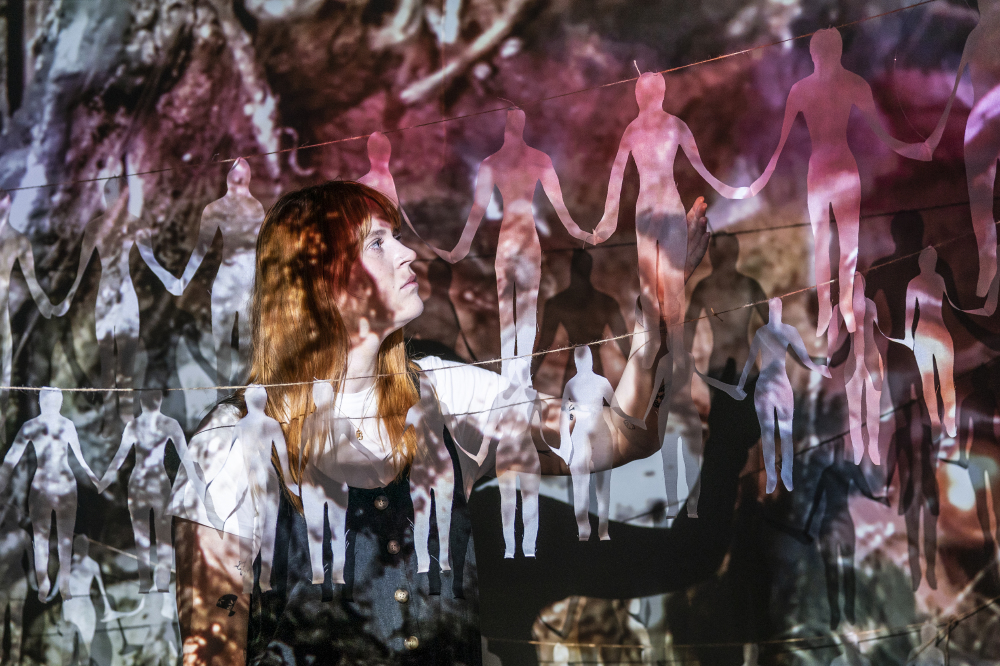You wake up in the middle of the night and sense pressure on your chest and a feeling of fear in your heart. You try to move but your limbs just will not budge. You try to call out for a parent or sibling but no sound comes out. It’s as though you’re partly awake but also somehow stuck in sleep. Everything seems so real, and you ask yourself, is this a bad dream?

Sleep Paralysis
This might sound like a nightmare, and in many ways it is, but what you might be experiencing is sleep paralysis. For many this strange occurrence of feeling half asleep and half awake can be a scary experience.
During sleep paralysis you are actually still partially asleep but you might see imaginary scenes playing out in front of you. There may even be sounds. However, rest assured that this is something that one third of students experience, according to a study by expert Brian Sharpless in 2011. Luckily, there are ways you can overcome sleep paralysis.
Firstly, it’s important to understand why it’s happening. When you understand the process, knowing why it is happening will help you to overcome the issue. Sleep paralysis usually occurs when you are about to wake up from sleep but it can also happen just after you’ve fallen asleep.
The reason you can’t move or speak is because your body is fast asleep, and most likely in dream sleep, also known as REM sleep. During REM sleep, your physical body can’t move, it’s a protective measure the brain uses so you don’t act out your dreams and fall out of bed or wander outside.
Although your body is still, your brain has partially woken up and your senses are taking in some sensory input. This means your mind is half awake; you can sense some things from the outside world but your physical body cannot move.
And sometimes, because you’re half in dream and half awake, you might see pictures or scenes played out around you, it’s almost as though there are images superimposed over your normal bedroom scene.
For most, sleep paralysis can feel like a negative experience but not for everyone. Some people are able to enjoy it in the same way that they might enjoy a scary movie - and sometimes the episodes themselves can be positive, even blissful. Many works of art and literature have been directly inspired by sleep paralysis.
It is often the fear of this altered state that can lead to fast breathing, and sometimes a feeling of weight on the chest. However, there are some other simple ways to overcome sleep paralysis.
1. Relax: Be brave and let go
The more you resist the sleep paralysis state by trying to move your body or call out, the more likely you are to stay in that state for a little longer. However, if you can be brave enough to just let go and relax, you’ll find it much easier to move out of this state.
2. Recognise: Understand what’s happening
So, the key is to relax and stay calm. Once you’ve done that, recognise that it’s not a threatening situation or a nightmare, there is nothing to fear and you will wake up any moment. It’s just that your body is asleep and your mind is awake. You’re safe and this will pass.
3. Breathe: Use your breath to wake up
Then, try this nifty breathing technique. (You might like to practise it in the waking state first.) Author and dream expert, Charlie Morley says, “The best way to break free from sleep paralysis is to relax and exhale through your front teeth, making a sound similar to letting air out of a tyre. This relaxation will help to disengage the paralysis mechanism.”
4. A Gateway to Lucid Dreams
Or, if you’re feeling really brave, try to stay with the feeling and instead of waking up, focus your mind on going back into a dream with full awareness and you might find that the experience transforms into a lucid dream. You see, the sunny side of sleep paralysis is that it can also be one way of having a lucid dream.
Unlike sleep paralysis, a lucid dream is one in which you know that you are dreaming and where you are able to exert some influence over the dream. You don’t experience that ‘stuck’ sensation as you would in sleep paralysis. In fact, you feel very free in your lucid dreams - you can choose to explore whatever you like from flying through the skies, visiting a warm tropical beach or meeting up with friends. The dream is your oyster.
So there is an upside to sleep paralysis, once you know what you’re dealing with, and how to work with this sleep state. In fact, these simple tools will help you to recognise this sleep state, how to overcome it, and if you’re feeling brave and manage to keep some awareness, to use it as a way to have fun in your dreams.
Leah Larwood www.themoonlab.net
Source:
Lifetime Prevalence Rates of Sleep Paralysis: A Systematic Review Brian A. Sharpless and Jacques P. Barber Department of Psychology, Pennsylvania State University (2011
Tagged in dreams

